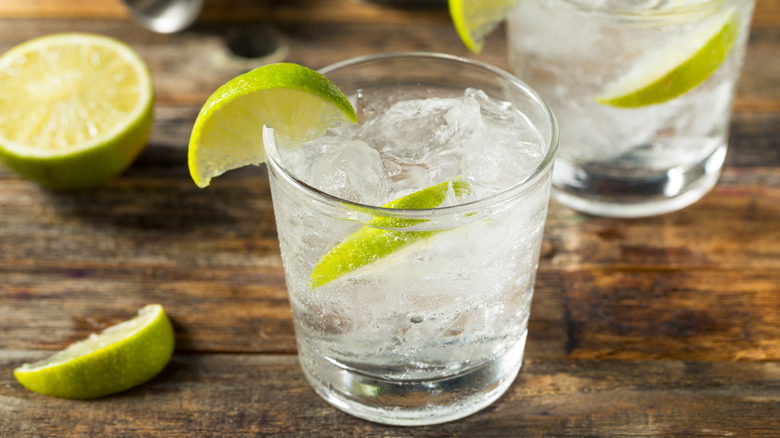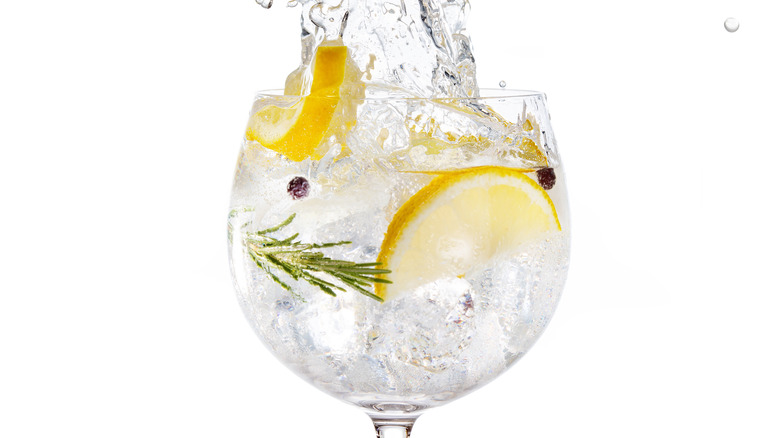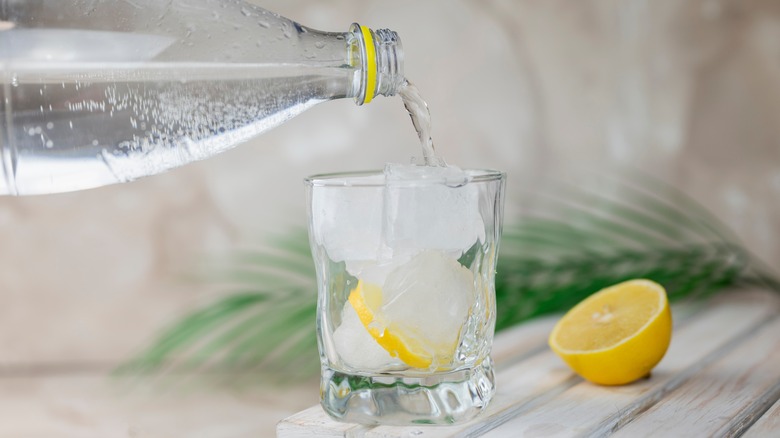Never Open Room-Temperature Tonic (Especially For Gin And Tonics)
The bitter bite of quinine isn't for everyone, but fans of gin and tonics know how delicious it can be. And while tonic water might not seem that different compared to club soda to the uninitiated, behind those clear bubbles is an earthy character that pairs well with the herbal flavors of your favorite gin.
If you've ever been in a hurry and opened a room temperature tonic water for your cocktail, though, you might have been left disappointed. While the flavors of the tonic water will come through, your drink might not have the effervescent lift that usually accompanies it. This doesn't necessarily mean that your tonic's gone bad. It's actually a problem with its temperature.
Tonic water's bubbles come from the carbon dioxide it's been infused with, but when it's served at room temperature or warmer, that gas dissipates more quickly. Warmer temperature makes it easier for the bubbles to escape, and so your drink will go from bubbly to flat much faster than it would if it were cooled. The same reaction occurs in sodas and other carbonated beverages, but it can ruin what would otherwise be a perfect gin and tonic.
How to quickly cool down your tonic
Sometimes things are out of your control and the only way you can make it to the party on time is if you settle for room temperature tonic water. Your drink shouldn't have to suffer, though, and thankfully there are a few ways to cool your mixer down quickly to save those bubbles.
The easiest low-tech way to handle this is to wrap your tonic water in a damp washcloth or paper towel, and then put it somewhere cool. This could be in the freezer or just at the bottom of a cooler filled with ice, whatever you have on hand. The key is the damp wrap, which will conduct heat away from the tonic water and help it to cool more quickly. If you can't cool down your drink, you could try cooling down the vessel instead. This way your warm tonic water can begin cooling once it hits the ice and the surface of your glass, and hopefully keep the bubbles long enough for you to enjoy your drink.
Obviously, the best solution to this problem is to just use cold tonic water, but in some situations beggars can't be choosers. When that happens, these cooling hacks will have to make do.
Other reasons your tonic is flat
Temperature might not be the only reason that you're gin and tonic is flat. Carbon dioxide bubbles can be fairly fragile if they aren't handled correctly.
You might already know that to pour the perfect beer you need to pour it at an angle into the sides of the glass, but the same goes for tonic water. While you don't have the same foamy head to deal with when improperly pouring tonic water, using this method can still reduce the rate that gas is escaping from your tonic water. Once you've got your gin and ice in the base of your glass you should tilt it at a 45 degree angle, and pour the tonic gently onto the side of your glass instead of towards the bottom.
You should always stir your gin and tonic to bring all of the components together, but it's important to avoid over-stirring. Some cocktails will call for a long stir to help the ice cool and dilute the drink, but anything with tonic or another bubbly ingredient should be given a quicker stir. Stirring your drink too much will release more of the trapped gasses and turn your tonic water flat. It's also another good reason why you should serve your tonic water cool. It can't rely on the same rigorous stirring to bring down the temperature of the drink, and it's only going to get warmer once it's been served.


